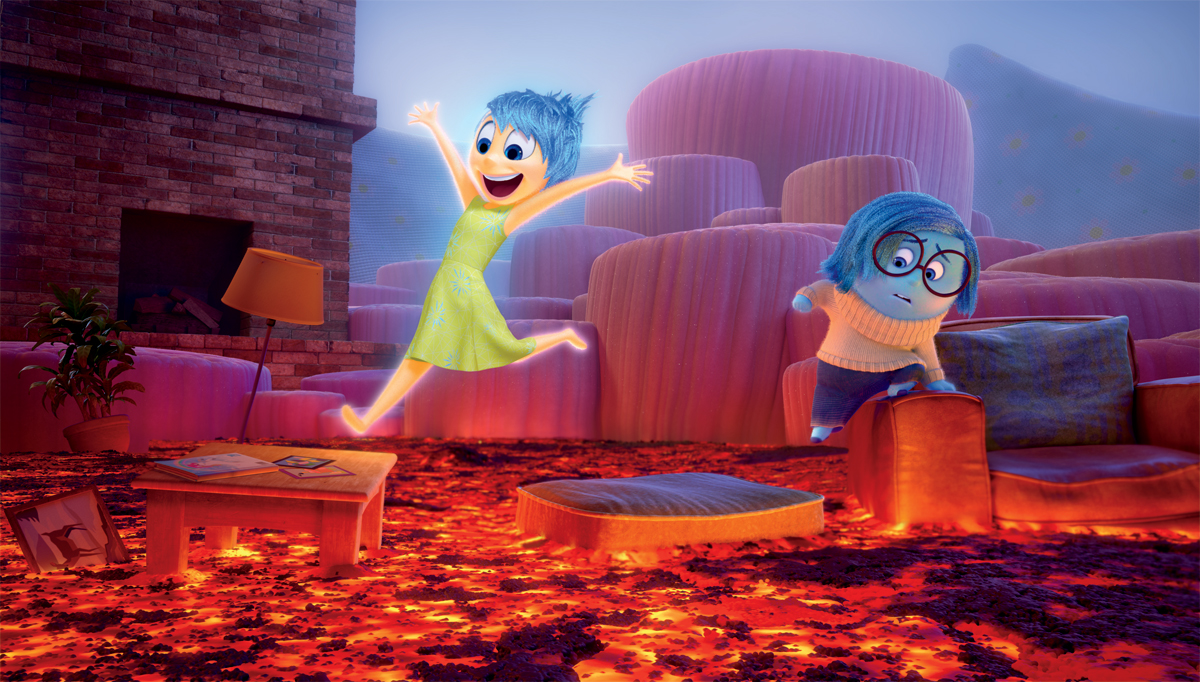This week is a joy, with no time for sadness, anger, disgust because – never fear – Pixar’s Inside Out is here.
Following its lauded premiere appearance at Cannes earlier this year Inside Out has garnered ecstatic reviews (we gave it 5 stars happily) and this Friday UK cinemas roll out the red carpet for Pixar’s latest masterpiece.
Win tickets and toys from Inside out HERE.
Taking us inside the mind of 11-year-old Riley the characters of Inside Out are the five emotions: Joy, Anger, Sadness, Disgust, and Fear. They take on the narrative toll and work together to ensure that Riley is coping with everything life throws at her. This is Pixar’s triumph; with each character able to control Riley’s reactions a powerful dynamic is instantly, wonderful, at play. When Riley’s parents uproot their family to move from to San Francisco Riley (and her emotions) have a lot to deal with.
The film’s director Pete Docter were in town recently with producer Jonas Rivera and the actress who gives voice and spirit to the emotion Joy, Amy Poehler. They discussed their inspirations for the film, why they decided to explore this side of life, and their reaction to the film’s premiere a few months ago.
Docter said, “we were blown away to be there and was probably the most nervous that I’ve ever been in my life.” He need not have worried. The film is already on its way to doubling its budget, and this is before the film is out here. Why is it such a success?
“There is an emotional undertone in every part of the film.” Poehler continued on the universal appeal of the film, “reminds you that you never know what someone is thinking, going through or feeling”, Docter commented, “which, as an adult, is more fear than I’d like to admit.”
 As with every Pixar movie the story goes through years of refining, and begins with a desire for insight into the human condition. But why emotions, and why through a young child? The answer lies with Docter’s daughter, and his reaction to her growing up.
As with every Pixar movie the story goes through years of refining, and begins with a desire for insight into the human condition. But why emotions, and why through a young child? The answer lies with Docter’s daughter, and his reaction to her growing up.
“There is still that period in childhood where everything is possible,” spoke Docter, “and talking about the loss of that felt very important. The group that are most fully aware and in-tune emotionally are 11-17-year-old girls. This is not a science film,” he added, “but it’s such an abstract concept that we needed all the help that we could get.”
Poehler’s thoughts on finding the character of Joy seems to agree with this, “The most exciting thing about playing her is that she isn’t a one-dimensional character. She is an emotion and has emotions and this focuses on the magic hour where puberty hasn’t ruined everything yet.”
Rivera agreed, “It’s a love letter to our kids, but we were also inspired by little kids who just seem happy all the time; we knew a number of them.”


Bonus video: Check out the three at the Press Conference for Inside Out below.
As is evidenced in the emotionally complex Toy Story trilogy Pixar’s films are positive experiences but encourage audiences to face up to the realities of life. In Inside Out Sadness is just as present as Joy, and this is a good thing.
“Joy is almost an abstract concept”, says Poehler, “but happy is a very vague term.” That Sadness is always part of our experiencing the world reminds us of Pixar’s nuanced approach to its storytelling. “It reminds us that it’s OK not to be happy all the time; no one is and it’s a good reminder that sadness can be your friend. As a parent you continually ask: ‘how do I help my child avoid pain while not depriving them of real experience?’ This gives children tools as a way to talk about their feelings; I know that it did with my kids.”


While every new Pixar film is cause for celebration, and Inside Out is no exception, this is possibly the greatest and most potent emotional journey yet. It is the very definition of a must-see.
Inside Out is showing in Cineworld cinemas from 24 July 2015
Click here to find out more, and book your tickets.![CINEWORLD_floating_Logo_RGB[2]](https://i0.wp.com/www.heyuguys.com/images/2015/07/CINEWORLD_floating_Logo_RGB2-700x244.jpg?resize=696%2C243)
![CINEWORLD_floating_Logo_RGB[2]](https://i0.wp.com/www.heyuguys.com/images/2015/07/CINEWORLD_floating_Logo_RGB2-700x244.jpg?resize=696%2C243)
Additional Reporting by Victoria Russell





